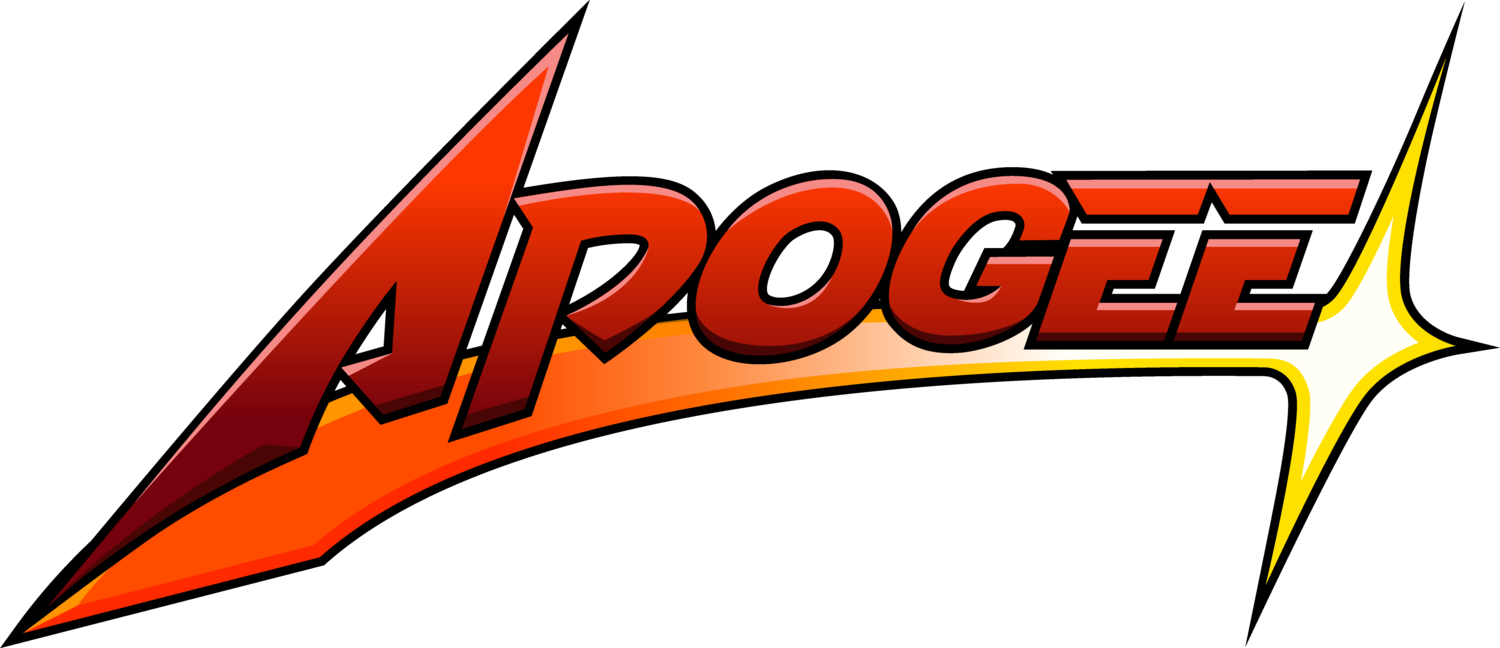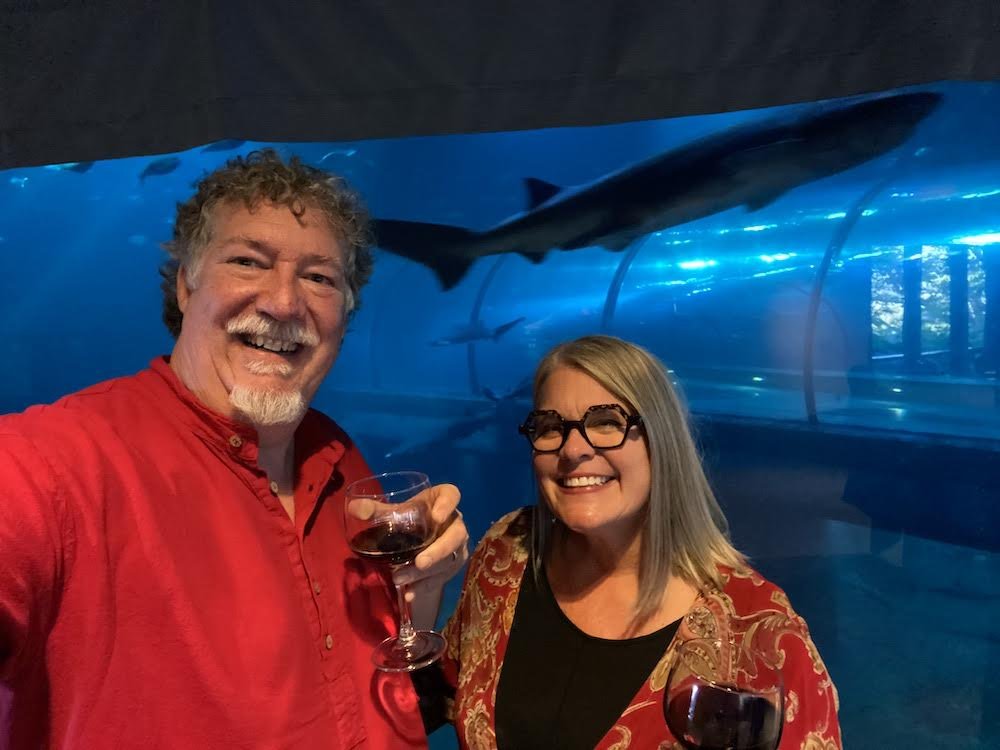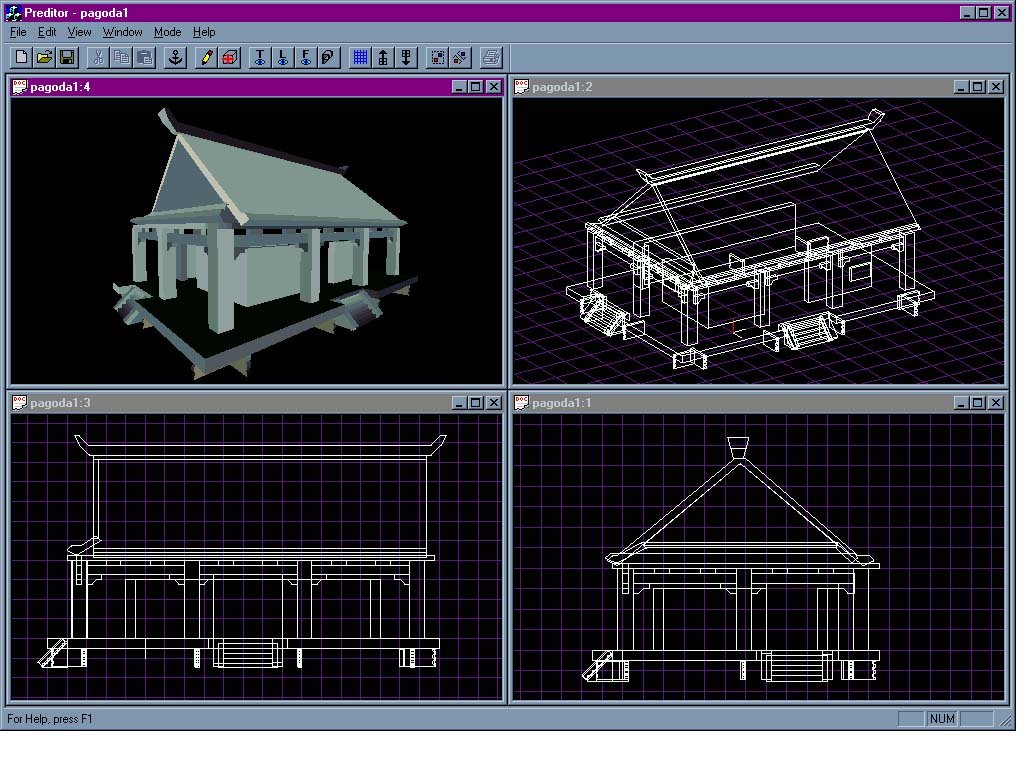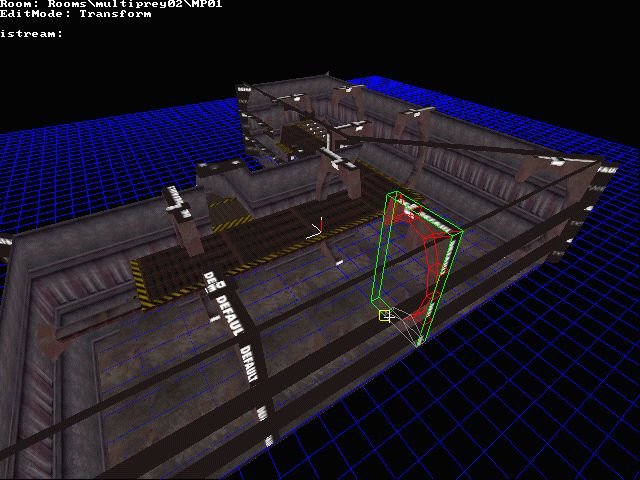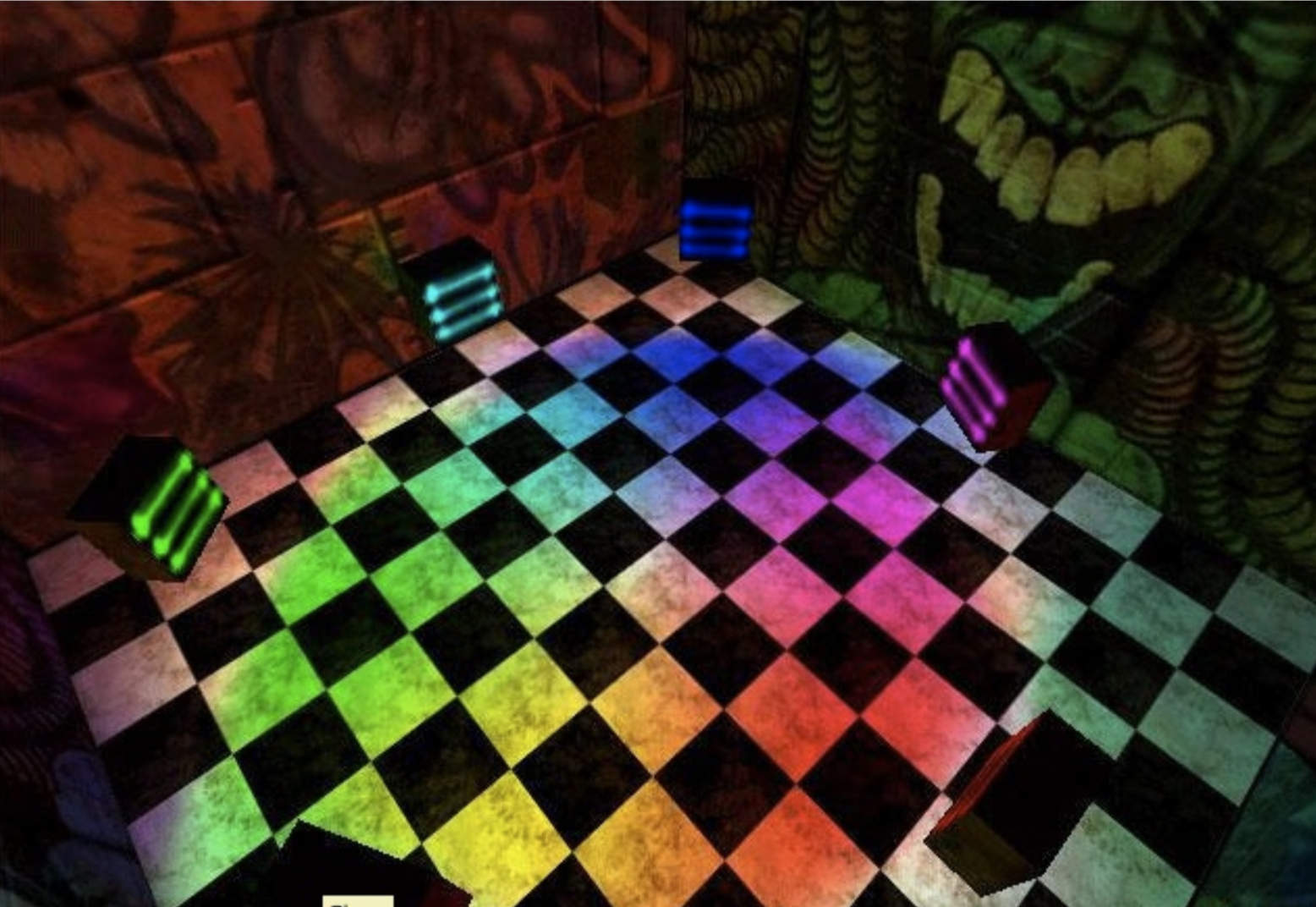Prey and the Birth of Portals
Project Leader Paul Schuytema's behind the scenes story of leading Prey during its two-year internal development run at Apogee.
The game Prey has an interesting history with three different development timelines. It all kicked off soon after we released Rise of the Triad and the team behind that game was looking to make their next big project.
The original Prey started under the leadership of Tom Hall, who'd we hired 18 months earlier to be the Creative Director of our Rise of the Triad project. Tom was a founder at Id, and we at Apogee had gotten to know him really well during our collaboration with Id on the Commander Keen series and Wolfenstein 3D. So when Tom left Id we jumped at the chance to add his creative genius to Apogee.
But at some point another industry legend, John Romero, called Tom and said something like, "Hey, I'm leaving Id. Let's team up and start our own studio where design is law."
It's totally understandable that Tom took that opportunity to form Ion Storm, but that left Apogee with a big hole to fill: who'd lead the Prey project for us?
Enter Paul Schuytema! The subject of this joyful and super insightful interview! Paul's enthusiasm is instantly infectious and his creative talents are a match to that eagerness. We were lucky to bring Paul onboard. And while in the end we didn't deliver a game, it was not Paul's fault — it was due to an internal decision to redirect all of our developer talent to Duke Nukem Forever in an effort to get that game over the finish line. Little did we know the finish line was forever out of reach, but that's the subject of a past blog.
On to the interview!
Q: Please give a quick few sentences on how you got into the game industry and what you're up to nowadays.
I've always been a "rules nerd" -- I love how rules, overlaid on free play, can create something magical. So I've always been a game designer and my first ever solo game design was for a miniatures skirmish game set in the time of Peloponnesian War. That was way back in 1974! Ugh, that makes me feel old.
At the end of grad school (I earned an MFA in science fiction writing), I got the chance to take over Orson Scott Card's Gameplay column in Compute magazine, and from there grew into more game writing -- for Omni, Computer Gaming World (CGW) and other publications. I ended up serving as the contributing editor for game design for CGW and did a monthly column called "Hex, Bug & Rock 'n Roll."
I was also writing game strategy books for Prima and Sybex and doing some game design consulting (most of that for a company called The Other 90%) when I quit my job in academia and got my first full-time gig as lead designer for Mechwarrior 3 at FASA Interactive in Chicago.
After my work on Prey, I took the long entrepreneurial road to open up my own PC development studio: Magic Lantern Playware. We had our main office in rural Illinois and a satellite small office in Dallas. We ended up shipping out about 20 games over the next seven years. From there, I had the honor of starting and running the Center for Creative Software Development for the University of Illinois Extension and did some solid "serious game" development.
Right now, I serve as the Executive Director of the Economic Development Alliance of Lincoln County (on the central coast of Oregon). It's my "third career" -- doing rural, small-town economic development -- basically, playing SimCity with real money. But I constantly use game design to help me think through and model complex economic scenarios and situations. Once a game-geek, always a game-geek!
Q: How did you first make contact with Apogee (or did Apogee first make contact with you... if so who made the contact)?
Now that's an exciting story! I fell in love with Duke Nukem 3D -- and got to do several stories on it for CGW, even traveling to Garland to meet you and George and the Apogee team. I remember asking George: "At what point in the development did you realize you created magic and had a monster hit on your hands?"
I wrote a long, detailed piece on how to create levels in the Build Editor for CGW, even modeling a multiplayer level of the student center at Monmouth College (where I was teaching at the time).
Fast forward to working at FASA Interactive and I received an email from you! You liked the depth I had in the Build Engine piece and I guess you got a sense of my game design chops, and you made me an awesome, dream-job offer. So we rented out our house and I packed up the wife and kids and we headed to Dallas.
Q: Were you a fan of Apogee's Duke Nukem 3D -- did this help your decision to join us?
As mentioned above, I was a Duke fanboy. At FASA Interactive we played multiplayer Duke every day, testing out new levels we created.
Q: And what attracted you to working with us on Prey?
I wanted to be a part of it (the wild and wooly frontier of PC gaming), and wanted a chance to help make Prey another great hit in the unique sub-genre of character-based first-person-shooter -- truly an Apogee creation. I was also fascinated by the design challenges and opportunities and the chance to work with some cutting edge engine tech.
Q: How big was the team when you first joined, and when the project was at its peak?
When I first walked into the offices in Garland, TX, it was essentially lead programmer William Scarboro and me. William had an office... I was in a large open room that would become the team bullpen. Pretty soon, you guys brought in coder-savant Tom Pytel (who wrote a DOS extender as a young teen -- who does that!?) and 2D artist Scott McCabe.
At the peak, we had about a dozen folks on the team, plus a few artists who would pinch hit on multiple titles being developed for Apogee.
Q: Prey had an amazing showing at E3 in 1998 when the press got to see portals in action for the first time. What were your impressions after that E3? Did you think the game was truly going to be something special?
1998 was the most amazing year for Prey at E3. Since the first time we showed the Prey engine at a Computer Game Developers Conference (I think it was at the Rendition booth), portals were in there and working as an essential element of the tech, but they weren't called out explicitly.
At E3 '98, we had a back room demo, running real-time, that first showed off portals as a design element (designed to blow people's minds!), and it was amazing just watching folks’ jaws hang open. No one had ever seen anything like that.
The first killer moment was when we showed off the portal mine, that let you drop a mine that opened a portal -- you could then drop the "sister" mine and open a rift in space. We would drop the mines so that when the portal opened up, you could see your own character from a side view -- you could raise your gun and shoot yourself. It blew people away.
The second killer moment of that demo was after we had showed off everything, we'd have them sit down and we'd spin a monitor towards them and ask if they wanted to try out multiplayer. They had no idea multiplayer was working and we'd run around blowing each other up for a while... we all knew we were seeing magic happen at the time!
Q: In your opinion, what were the key innovations and attractions to Prey?
The first was evolutionary -- riffing off what Apogee did with Duke 3D and continuing on the idea of having a first-person shooter with a strong central character.
I'd like to think that we raised the bar even further on first-person story telling.
The key tech innovation was clearly the portal -- it was a new way to organize 3D space in real time. But it did require some skill and knowledge of the level designer (we tried calling them "game space engineers" -- a term that caught on as well as "fetch" in Mean Girls), otherwise they'd bog the screen rendering down.
We had a pretty amazing level editor and scripting system that, coupled with portals, allowed us to design interactivity never seen before.
Also, the lighting system that William Scarboro created allowed a level of realism that had never been seen before.
Another cool aspect of the game was our dynamic soundtrack system that would mix a custom sound track based on what was happening in the game and where the player was. We got a chance to work with the band KMFDM who created some amazing modular music and themes.
Q: What 2 or 3 contributions did you make to the game that you were most proud of?
One of the most satisfying was working closely with lead programmer William on the early iterations of Preditor, our real-time 3D level editor. It was a real back and forth and together we helped design and implement a truly intuitive tool.
I'm also proud of how deeply story was embedded in the game -- I wrote a novella that was to become the flow of the game. And that writing-forward approach was unique and allowed us to test out mood, atmosphere and character development on words before it hit the small screen.
The other contribution I was proud of was the development of Level Plot Points -- a system to flowchart the flow through a level. It allowed us to design a level that worked with the flow of the story, but allowed our level designers maximum freedom, and helped guide them when they needed to come back to keep plot compression points to drive the story forward.
My final "proudest moment" was the level design competition that we created. We had folks from all over the country (and world) competing, getting excited about the game and submitting amazing levels. It was a great equalizer. It was all about the levels you could create and not about age, skin tone, ethnicity or anything like that -- just about the work. It lead to hiring Jon Anderson and Matt Wood, two great guys who have had long careers in the industry. We gave them that shot. How cool is that?
Q: Although the game ended up getting put on hold so that internally we could focus on Duke Nukem Forever, what were your feelings about working for Apogee during that time?
I LOVED working there. We were on the cutting edge of some amazing PC game development and the whole company was packed with enthusiastic gamers. We loved playing other folks games and experiencing the magic we were all creating across the industry. It was a heady time.
George and I did have a disagreement on team make up. We'd often joke about it. Imagine if you had two equally qualified game developers applying for a position. One was a young, inexperienced 18 year old, one was a married man of 35 with a kid. George said he'd take the 18 year old every time -- he has no life yet and wants to work all the time. I'd take the married man -- he's more grown up and responsible and can balance work and life. We agreed to disagree. :)
The original Prey team.
Q: The Prey project was resurrected a few years after you left. Human Head Studios started from scratch using Id's latest engine tech at the time and implementing numerous new features to the engine, including portals. The game took about three years to make and came out in 2006. Did you play this released version of Prey? And if so, any thoughts about it?
I did, and it was a solid game. Not quite a visionary as we imagined with the modified Trocaran Dyson sphere, but hey, it looked great, played well and it shipped! And the mystical plane walking was done really well.
It's funny, but I worked with Tim Gerretsen of Human Head back at FASA Interactive. We shared a beer (or three) on my last day there before I headed off to jump into the world of Prey. Small world!
Q: The Human Head version of Prey definitely included many core ideas that were born when you were in charge of the project while it was at Apogee. Hopefully that made you proud?
It sure did. I imagine it must feel like a screenwriter seeing their movie getting made by another director. Your ideas are there but they added their own vision and ideas. I was honored to play a small part in it all.
Q: Can you share a cool story that maybe most of us don't know about regarding your time on Prey?
Well, perhaps you could file this under "innovative team management" or "boneheaded management." As our team was getting bigger, I wanted to do some offsite team meetings for bonding and to get the old creative juices going. One we did was at an indoor go-kart track in Dallas with high speed go-carts (you even had to get a special license to drive them). The team was so psyched and we practiced for hours on a driving sim -- I think it was MSoft's Monster Truck Madness -- beforehand.
When the day came, we had the track to ourselves. Wowza did we race fast! In that case, our virtual skills most certainly translated to the go-kart track and we were doing some insane racing. So much so that the track crew wanted to slow us down so the shook talcum powder all over the track (the track was smooth concrete). It didn't slow us down -- we were protected and had helmets -- we just went at it and spun out like crazy. They finally pulled us in, cleaned the talc off the track and let us have at it.
But don't ask me about the time when I tried holding a team meeting at a Dallas gentleman's club... that was a bad idea!
Q: Do you keep up with gaming much anymore? Any current fave games?
I'm not such an industry fan-boy anymore, but I still (and will always) consider myself a gamer. These days, I'm playing my PS5 (boy, that took a while to get!) and also playing board and roleplaying games.
I'm still waiting for the true next generation PS5 games to come out, but I'm loving the (slightly old by now) Assassin's Creed Valhalla. I love the intuitive feel of combat. It's so much more than button crunching. And I love the mission design that lets you get in quality play in just 30 minutes or so (necessary because of a very busy life).
For board games, I love Blood Rage (some very unique death dynamics in there) and Wingspan. I'm also a total fan of Mörk Borg, the Swedish doom metal RPG -- stripped down rules and just dripping with nihilistic gloom.
For fun, I love coding little games in Lua for the Pico8 "fictional" 8-bit gaming emulator -- so simple and fun!
Q: What do you think about the indie gaming scene nowadays?
I remember it was chaos with the early "gaming phones" and no standardizations -- the same with handheld consoles and other gaming systems... but now that we have some mobile OS standardization (and ubiquitous digital delivery), we're starting to see some amazingly innovative games and the platforms are within reach of anyone.
I'm not a fan of the "let's use psychology instead of game design" to monetize "free to play" games -- I think the industry took a step backward then (remember all of those Facebook games?), but it's back coming around. Eventually, innovations that lead to maximum fun will always percolate to the surface.
Q: Are you buying into the whole metaverse grand plan? And isn't it ironic that if it catches on people will essentially use portals to get from one location to another?
It's logical that we're going there, but I think we're a long way away from the truly immersive worlds of Ready Player One. To me, things come down to shared standards, quality interfaces and engaging experiences (and folks not getting dizzy in VR) -- and just how will multiple companies plug into the same persistent digital universe? But we've already been down the portal rabbit-hole -- I'll be ready to jump in there once again!
That's it, unless you have anything else you'd like to add!
One final thought, with the wisdom of hindsight. It really boggles the mind at how difficult what we were attempting to do with Prey actually was. We were simultaneously doing new 3D engine R&D (and building the tools from the ground up) while trying to create the game at the same time, all the while working with the nascent, constantly-changing technology base of 3D acceleration (from the 3DFX Glide API to the first iterations of DirectX). It really was amazing what we accomplished!
The hindsight comes from doing that same work in my own small studio, Magic Lantern Playware. It took us five published games until we had developed a stable and reusable engine for our future work. Back in those "Wild West Days," it certainly wasn't for the faint of heart and I have so much respect and awe at those cutting edge 3D programmers back then, not only at Apogee, but all across the industry.
Thank you Paul!!
And more interviews are coming!
